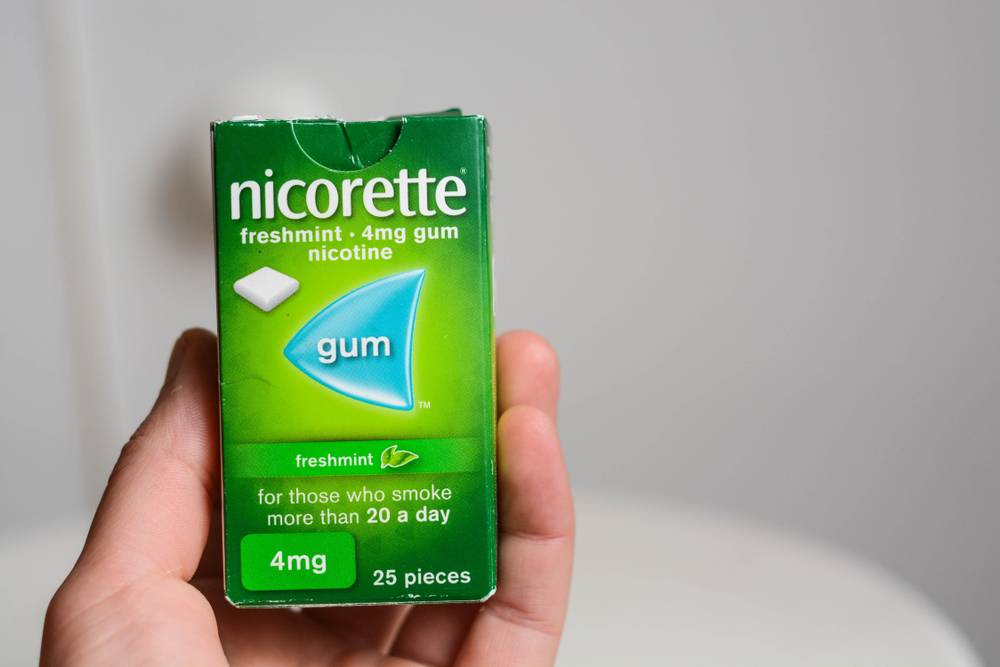Want to Quit Smoking? These Evidence-Based Methods Really Work
Quitting smoking isn’t easy, but it’s one of the most rewarding things you can do for your health. Whether you’ve tried before or are ready to give it your first shot, the best ways to quit smoking are backed by solid science—and combining these methods can make all the difference.
Speaking to Channel NewsAsia, Dr Ken Lee, Senior Consultant at SGH’s Department of Respiratory and Critical Care Medicine, emphasised the difficulty of overcoming nicotine addiction.
“Smoking addiction is very difficult to overcome. A smoker experiences withdrawals and cravings, which he may not be able to overcome on his own.” Dr Lee shared.
1. Medications That Can Help You Quit Smoking
One of the best ways to quit smoking is to use medications designed to reduce cravings and ease withdrawal symptoms.
Studies show that using nicotine replacement therapy (NRT) doubles the chances of quitting, particularly when paired with support like counselling or group therapy. Available as patches, gum, lozenges, and inhalers, NRT helps manage the physical withdrawal symptoms that come with quitting smoking, such as irritability and cravings.

Another highly effective option is varenicline (Brand names: Chantix, Champix). This prescription medication works by targeting nicotine receptors in the brain, making smoking less satisfying. It not only reduces cravings but also lowers the enjoyment of smoking. Varenicline can increase quit success by up to 62%, making it one of the most effective pharmacotherapies available.

Originally developed as an antidepressant, bupropion also helps with quitting smoking by reducing feelings of anxiety and restlessness that can arise when trying to quit. Although it comes with side effects like dry mouth and sleep disturbances, it can be a good alternative for those unable to use NRT or varenicline.
Watch now: Smokers Ask Respiratory Doctors Their Most Burning Questions
2. The Role of Behavioural Support in Quitting Smoking
While medications like NRT and varenicline can help reduce cravings, behavioural support plays an equally important role in helping smokers quit for good.
Even short, opportunistic interventions from healthcare professionals can make a difference. A systematic review and meta-analysis found that brief advice from physicians increases the likelihood of a quit attempt by 24% compared to no intervention.
Offering assistance, such as NRT or referrals to cessation services, boosts quit attempts by 40-60%, compared to merely advising patients to quit smoking on medical grounds. This evidence strongly suggests that practical support, rather than just advice, is crucial to encouraging smokers to quit.
“Professional counselling can help patients cope with stressors in life, teach them techniques and recommend appropriate medication, which can help them overcome cravings and cope with the withdrawal symptoms,” Dr Lee said, emphasising that guided support makes a significant difference in overcoming nicotine addiction.
3. Gradual Reduction as a Method to Quit Smoking
For many smokers, the idea of quitting all at once can feel overwhelming. This is where gradual reduction comes in as one of the best ways to quit smoking, particularly for those who have tried and struggled with abrupt cessation. Gradual reduction involves cutting down the number of cigarettes smoked over time before quitting completely, and evidence suggests that it can be just as effective as quitting abruptly.
Gradual reduction, especially when supported by pharmacotherapy like NRT or varenicline, produces similar long-term quit rates as abrupt quitting. Smokers who reduced their cigarette intake before quitting altogether were just as likely to remain smoke-free six months later as those who quit cold turkey.
Moreover, using fast-acting NRT during the reduction phase—such as nicotine gum or lozenges—helps manage cravings between cigarettes, making it easier to cut back. This combination of gradual reduction and NRT increases the chances of success. Smokers who use NRT while gradually reducing their cigarette consumption are 1.68 times more likely to quit compared to those who try to reduce without pharmacotherapy.
Watch now: Throat cancer: how is it related to smoking? | Dr Jaideep Rao (Senior Consultant Surgeon)
4. Quitlines and Proactive Treatment
For many smokers, quitting can feel like a lonely battle. That’s where quitlines come in—a valuable tool for those looking for guidance and support. Quitlines provide expert advice and motivation over the phone, helping individuals navigate cravings and challenges as they work to quit smoking. Smokers who are actively connected to quitlines through the “Ask-Advise-Connect” approach have higher quit rates than those who are simply referred to these services.
This proactive method links smokers to quitline services directly, increasing engagement and making it easier to access the help they need. Whether it’s tips on managing withdrawal or motivation during difficult moments, quitlines offer crucial support at the right time. The convenience of phone-based help means that smokers can get advice without leaving their homes, making it one of the most accessible ways to boost quit success.
Read more: Smoking Cessation: It’s all about the Questions – 5A’s and 5R’s
Combining the Best Strategies for Success
Quitting smoking is challenging, but using a combination of proven strategies significantly boosts your chances of success. From pharmacotherapy options like nicotine replacement therapy (NRT), varenicline, and bupropion to essential behavioural support through counselling or quitlines, there are many tools available to help smokers achieve their goals.
Gradual reduction, supported by medications, offers an alternative for those who find abrupt quitting overwhelming. At the same time, system-wide changes, such as making cessation services more accessible and integrating support into healthcare, ensure that smokers have the resources they need.
Ultimately, the best ways to quit smoking involve tailoring a plan that combines these evidence-backed methods, giving you the support needed to beat cravings, stay smoke-free, and improve your long-term health.
Get The Help You Need
Malaysia
Tobacco Quitline under the mQuit Smoking Cessation Programme
- Call 04 653 5999 (toll-free)
National Cancer Society Malaysia Quit Smoking Clinic
- Operating hours Monday to Friday, 8.30am to 4.30pm
- To make an appointment or find out more about our programmes, call +603 2630 6670 or email [email protected]
Indonesia
Quitline
- Free toll at 0-800-177-6565, available 8am till 4pm
Philippines
Quitline
- Smokers who wish to quit may call hotline no. 165 – 364 or text ‘STOPSMOKE’ to (29290) 165 – 354.
- Services offered are free within Metro Manila.
Singapore
Singapore General Hospital (SGH) Smoking Cessation Service
- Available for both patients and non-patients.
- Approach any pharmacist at the SGH Pharmacy (Block 4, Level 1).
- Call 6321 4377 to make an appointment.
Start to S.T.O.P. (Speak To Our Pharmacists) Quit Smoking Programme
- A qualified and dedicated pharmacist will walk with you through your entire quit journey.
- The programme is 6 weeks long and comprises face-to-face and telephone counselling sessions.
- Every session is professionally customised and personalised according to your progress.
- Choose a convenient location out of over 20 participating community pharmacy stores islandwide.
Health Promotion Board’s “I Quit” Programme
- Access the QuitLine at 1800 438 2000.
Visit the website at www.healthhub.sg/programmes/88/IQuit for more information.

